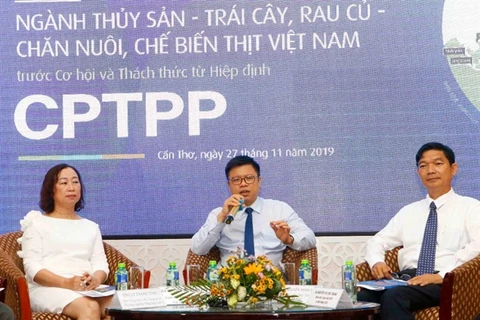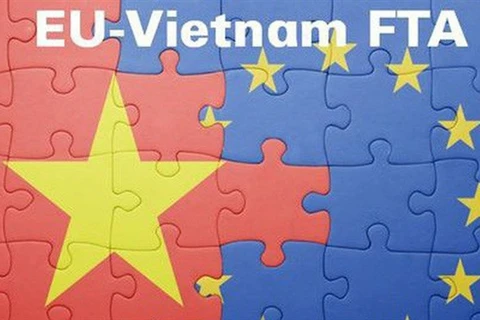 Delegates discuss opportunities and challenges arising from CPTPP for Vietnam’s garment and textile, footwear, timber products and beverage sectors at a conference held in HCM City on December 5 (Photo: VNA)
Delegates discuss opportunities and challenges arising from CPTPP for Vietnam’s garment and textile, footwear, timber products and beverage sectors at a conference held in HCM City on December 5 (Photo: VNA) HCM City (VNA) - With preferential tariffs provided under the Comprehensive and Progressive Agreement for Trans-Pacific Partnership (CPTPP), Vietnam has the opportunity to increase exports of garments, footwear, timber products, and beverages to other member countries.
But whether Vietnamese enterprises can cash on the opportunity depends on their preparation, Nguyen Thi Thu Trang, director of the Vietnam Chamber of Commerce and Industry’s WTO and Integration Centre, said.
Speaking at a conference titled 'Opportunities and Challenges from CPTPP for Vietnam’s Garment and Textile, Footwear, Timber Products and Beverage Sectors' held in HCM City on December 5, she said: “Our exports of footwear, garment and textile, timber products, and beverages to CPTPP member countries account for 12.5 percent, 16.04 percent, 20 percent and 23.46 percent of their total exports.
“We export a lot to CPTPP member countries, but our market share remains modest, for instance at 2-2.9 percent of their footwear imports and 0-6 percent of garment and textile imports. Therefore, there is still much more room for Vietnamese firms to boost exports,” according to Trang.
She noted that Canada, Mexico and Peru are countries that Vietnam does not have free trade agreement with, thus CPTPP offers great opportunities for Vietnamese firms to access these markets through preferential tariffs.
But to capitalise on the opportunities, the products must meet the CPTPP’s rules of origin and conform with sanitary and phytosanitary (SPS) requirements and technical barriers to trade (TBT), she said.
“If we do not meet their requirements, we cannot utilise the preferential tariffs that CPTPP member countries offer to us,” she stressed.
Khuu Thi Thanh Thuy, general secretary of the HCM City Textile and Garment - Embroidery Association, said Vietnamese garment and textile firms have faced difficulty in meeting the CPTPP’s rules of origin since their raw material imports from countries outside the CPTPP remain high.
Local and foreign firms are now investing in the underdeveloped textile, dyeing and fabric segments to increase the local content rate, she said.
Vo Tan Thanh, director of the Vietnam Chamber of Commerce and Industry’s HCM City branch, said tariff commitments in the CPTPP come with relatively detailed and complex rules of origin, which not all businesses know how to comply with.
“Therefore, understanding CPTPP commitments, the conditions required to take advantage of the opportunities, their impacts on market prospects and development trends in these sectors are important for Vietnamese enterprises to take advantage of the exciting opportunities arising from the CPTPP,” he said./.
























